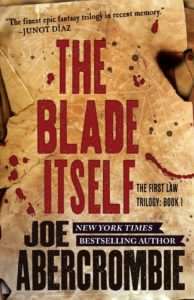Adrian Collins's Blog, page 112
December 25, 2022
REVIEW: The Bruising of Qilwa by Naseem Jamnia
Naseem Jamnia gifts a wonderous new world in their debut novella, The Bruising of Qilwa. A world plagued with genocide and disease, a great number of refugees seek safer lands. Yet, Jamnia offers a different perspective for the immigration story. A narrative in which the colonizer becomes the oppressed. Defying its length, The Bruising of Qilwa pursues the varying facets of marginalization and blends it into an intimate account of family and identity in this medical fantasy.
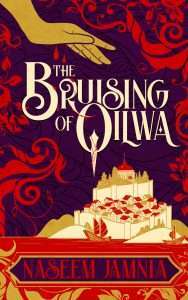 The city-state of Qilwa was not always free. After thousands of years spent under the control of Sassanid and later Dilmun, the Qilwans are finally in control of their democracy.
The city-state of Qilwa was not always free. After thousands of years spent under the control of Sassanid and later Dilmun, the Qilwans are finally in control of their democracy.
They are understandably wary of outsiders, especially with a new disease emerging. As dead bodies congest the streets and sea, Qilwans are quick to blame the refugees.
The Bruising of Qilwa follows the narrative of a nonbinary Sassanian refugee and blood-magic user, Firuz-e Jafari. Firuz and their family arrive in disease stricken Qilwa. Firuz is blessed to find work as a medical assistant to Kofi, the only healer willing to treat those of Sassanian blood.
The Bruising of Qilwa contains some of the most memorable voices I’ve read in fantasy. Having an assistant healer as the protagonist unfolds a different kind of fantasy story. In many ways, The Bruising of Qilwa is more slice of life than epic. A good majority of the story is Firuz’s day to day life in Qilwa. They are treating patients and disposing of deceased bodies. They are guardian to their brother and a young refugee they adopted. As they uncover secrets regarding this disease, they also are adapting to their new homeland and protecting their family. These small moments of Firuz’s daily struggles are where Jamnia’s writing shines brightest.
I do believe The Bruising of Qilwa would have been better served as a full-length novel. Jamnia expertly depicts the medical setting in which Firuz worked and I craved more. I wanted additional depictions of Qilwans struggling with the rise of this new disease and the influx of migrants. I wanted more elements of mystery regarding this “blood-bruising” disease.
Naseem Jamnia delivers a powerful message in The Bruising of Qilwa. Their story of the marginalized refugee is not one of good versus evil. It’s a story of survival and a commentary on fear. While not quite action-packed, readers of dark fantasy will appreciate the absence of true righteousness.
Read The Bruising of Qilwa by Naseem JamniaThe post REVIEW: The Bruising of Qilwa by Naseem Jamnia appeared first on Grimdark Magazine.
December 24, 2022
REVIEW: Essex Dogs by Dan Jones
Essex Dogs is the fictional debut of acclaimed historian Dan Jones, whose previous bestselling non-fiction titles like Power and Thrones have gained him countless and diverse admirers and fans. These admirers and fans include Jones’ fellow historians like Simon Sebag Montefiore, as well as legendary Guns n’ Roses bassist Duff McKagan. Incidentally, the latter even appeared in a very interesting video about the Middle Ages with Dan Jones, which one can watch on YouTube.
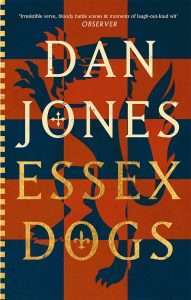 In his debut’s Author’s Note, Jones credits a dinner with the superstar author of A Game Of Thrones, George R.R. Martin – arguably the godfather of Grimdark fantasy fiction – as being the inspiration for him to write this fictional tale. And we are grateful for it. Because apart from being full of grimdark undertones to match the best dark fantasy out there, Essex Dogs is delivered in a confident and compelling voice, one which breathes new life into the Hundred Years’ War.
In his debut’s Author’s Note, Jones credits a dinner with the superstar author of A Game Of Thrones, George R.R. Martin – arguably the godfather of Grimdark fantasy fiction – as being the inspiration for him to write this fictional tale. And we are grateful for it. Because apart from being full of grimdark undertones to match the best dark fantasy out there, Essex Dogs is delivered in a confident and compelling voice, one which breathes new life into the Hundred Years’ War.
The titular Essex Dogs are a band of ten men who form part of a company in the English army led by King Edward III. This army is also the invasion force that storms France in 1337, thereby kicking off the bloody Hundred Years’ War. The band contains men from Essex, yet also places as far flung as Scotland and Wales. Jones brings each of these men to life with aplomb, painting a vivid, credible picture of a motley crew with compelling backstories.
The band is led by the sombre Loveday FitzTalbot, a jaded veteran who has spent years on end fighting for his country. He has also suffered a terrible, personal loss in life, which has left his existence almost bereft of meaning. I say ‘almost’, because there is one thing that still drives Loveday: ensuring that he looks out for all of his men and brings them back home safely. In this way, this experienced and dogged leader gains the quiet respect of his colourful, unruly comrades. These include ‘Father’, a priest gone rogue and increasingly bereft of his wits, who is a highly original and engaging creation by Jones. You’d think an elderly priest might provide stability and guidance to the group, yet Father is a wild card who constantly rocks the boat.
The other band members include two intimidating warriors named Scotsman and Millstone, a shrewd soldier of small stature named Pismire, as well as five English and Welsh archers that include the youngest member of the group: a youth named Romford. These ten characters constitute a portrayal of the common English soldier’s life during the invasion, which culminates at the famous battle of Crecy.
All throughout, the descriptions of France are engaging and easy to follow for those who – like me – are largely unfamiliar with this particular chapter of history. Personally, I discovered the medieval France travelled by the Dogs with a sense of wonder, for Jones’ description of the country left me feeling as though I was discovering a mystical world in a fantasy novel for the first time.
As can be surmised, the Dogs fall afoul of their own side as often as they clash with French defenders, while finding themselves subject to the whims of their own English lords. Lords who at best could be described as loveable rogues, yet who are also self-serving, while caring almost nothing for the commoners they command. These scenes bring to light the eternal absurdity and unpredictability of war, in which traitorous, sabre-rattling knights like Sir Godefroi constantly profit, while those obeying orders often face severe or fatal setbacks.
Jones’ storytelling does not glorify those in power. Yet it does not unnecessarily demonise them either. Instead, he strikes a fine balance when describing the likes of King Edward III, the Black Prince, or army commanders like Northampton and Warwick. This approach serves as a useful counterweight against general misconceptions related to the machinations of medieval power and the causes of war. Not that much has changed, if recent history is anything to go by.
Essex Dogs is an impressive, five-star debut. Its pace is just right, the author has excellent knowledge of the period and its leading characters are wonderfully flawed and plausible. The word on the street is that this novel is the first of a trilogy; I cannot wait for future instalments, to learn more about what lies ahead for Loveday and co., as well as the background of enigmatic and engaging characters like Pismire, Scotsman and the woman from Valognes.
As for Jones’ writing style, I think it splendidly combines Bernard Cornwell’s well-structured and pacy plots with the savage and sensual characterisations of Tim Willocks. The dynamics between a fellowship of characters told through the story of an invasion is also highly original, and I doubt it’s been done before in either high fantasy or historical fiction.
In my opinion Jones is an author every bit as good as Bernard Cornwell and Conn Iggulden, if not better. Historical fiction is crying out for a novelist who can revitalise the genre, just as Joe Abercrombie did with grimdark fantasy. And in Jones and Essex Dogs it appears that our prayers may have finally been answered.
Read Essex Dogs by Dan JonesThe post REVIEW: Essex Dogs by Dan Jones appeared first on Grimdark Magazine.
December 23, 2022
An interview with Kian N. Ardalan
Kian N. Ardalan’s new novel, Eleventh Cycle, is a tour de force of grimdark fantasy, featuring epic worldbuilding, well-realized protagonists, and a hauntingly beautiful aesthetic. Eleventh Cycle is the first volume of Ardalan’s Mistland series. Read our complete review of Eleventh Cycle here.
I recently had the pleasure of discussing with Kian N. Ardalan about his new novel, his evolution as a writer, and the future of grimdark fantasy.
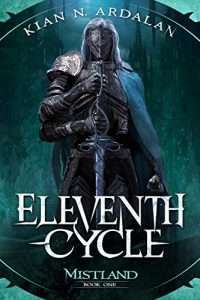 GdM: How did you first become interested in fantasy? When did you first start writing?
GdM: How did you first become interested in fantasy? When did you first start writing?
KNA: Oh man. Hard to answer. I was into books since a young age, but it had to be something dark. I think I first got into fantasy through videogames, and eventually I came across Mark Lawrence, and it’s been my favourite genre ever since.
As for when I started writing, it was definitely as a child. I wasn’t very gifted academically, but when we had creative writing during English class and got to read our writing out loud, it was the one time everyone held their breath and it felt good.
Around 2017 is when I picked it up as a hobby on /r/writingprompts. Everyone was just so supportive and encouraging that it eventually went from a hobby to becoming a job.
GdM: One of the inspirations for Eleventh Cycle is the Dark Souls video game. Could you tell us more specifically about how Dark Souls influenced your new novel?
KNA: Haha. This is a rather difficult question to answer with brevity, but I will give my best. I think part of it was that it had to be a Dark Fantasy world with haunting beauty. The world is indifferent to the struggles of our characters and I wanted to capture that concept. I’d liken it to a wilting flower where the slow decay is beautiful in its own right. I heard somewhere that no matter where you took a still-shot from the Dark Souls game, it was supposed to look like a haunting yet beautiful painting, and I wanted to capture that.
The other aspect is story threads which aren’t expressed overtly but rather through research/close attention. Miyazaki (creator of Dark Souls) once said that he was reading J.R.R. Tolkien’s books, but since he wasn’t entirely fluent in English, he had to do research after finishing the books, which led him to have epiphanies about storylines after the fact. I believe the western world is obsessed with efficiency. Chekhov’s gun is the embodiment of this. I allowed myself not to have to outline every link between every storyline and allow the reader to connect dots if they so wish.
GdM: What are some of your other inspirations for Eleventh Cycle beyond Dark Souls?
KNA: Other than Hollow Knight (which is just another game), I’d say Angel’s Egg. It is a haunting anime movie directed by Mamoru Oshii (maker of Ghost in the Shell) in 1985. At 1h and 15 minutes, it has only a handful of dialogue and the rest is just symbolic imagery. That movie has left a lasting impression on me and for good reason.
The only other inspiration of note may be Berserk, which also influenced the Dark Soul games, and of course Lovecraft for the more eldritch horrors.
GdM: Each of the main characters in Eleventh Cycle experiences tremendous suffering. Was this planned from the time you started writing the novel? Is suffering necessary for readers to build a strong emotional bond with the characters?
KNA: I knew early on that some characters would go through hell, but I didn’t have the full picture for all of them.
I’d say suffering is very human. The degree of suffering is a greater question I feel. My debut had characters facing struggles but nowhere near as grim or raw as with Eleventh Cycle. Yet I will argue one facet of this: it isn’t that you need suffering to build a bond with a character, but you do need to understand how they process that suffering. The death of a close friend won’t make the protagonist relatable as much as how you represent their grief.
GdM: To me, Eleventh Cycle feels like a new style of grimdark fantasy. What was your philosophy while writing it?
KNA: That is incredibly kind of you to say! I think there is a belief at the moment that Grimdark is made to horrify and shock. It’s like being drawn towards the grim and dark which is appealing for many.
I don’t think that’s what I was trying to do with Eleventh Cycle. For example, George R.R. Martin’s prose in A Game of Thrones comes across as quite blunt. It has a bludgeoning impact. With Eleventh Cycle, I wanted there to be beauty in the prose even when depicting horrible moments. I wanted to find beauty in the melancholy. And at the same time, my focus wasn’t simply on shock value, but really to capture the human essence in suffering and how to move past that. In a way, I want the cumulative experience of the entire series to be morose, hopeful, and most importantly cathartic.
GdM: What are your thoughts on the future of grimdark as a genre?
KNA: I can’t really comment on the future of grimdark as a whole, but I can comment on what I hope. Stories, in general, are a representation of a time’s zeitgeist. I didn’t necessarily intend to write a grimdark book, but I wrote a story that resonates with grimdark themes instead. I hope that grimdark will continue to move away from being edgy or grim for the sake of it and will continue to provide an opportunity to explore the rawness of what it means to be human even at the darkest of times. Also, as a side note, I wish to dissuade people from the idea that grimdark is mature or adult simply because it has such dark subjects. I truly did write Eleventh Cycle with the intent of causing my reader anguish, but controlled anguish. They had to come out the other side faced with a horrible reality while I did my best to show that even in that darkness, there is hope.
GdM: The worldbuilding feels so natural and immersive in Eleventh Cycle. How did you go about introducing this new, expansive world in such an organic fashion?
KNA: Oh man. That’s hard to say. I wish to disclaim that I am a VERY self-critical individual. Even with all the mounting praise for Eleventh Cycle, I still think I could have polished it more. I could have gone a lot lighter on the exposition early on.
But for when I did do it right, I think it was about showing the characters and their relationship to the world at large. One of my favourite concepts is the forgotten curse. If the characters referred to this nonchalantly and didn’t seem to care, neither would the reader. But the existential dread and fear which comes from thinking that you might one day disappear with no trace and no one would remember you speaks to something very primal in us.
GdM: Your writing has evolved significantly since your first published novel, The Fantastically Underwhelming Epic of a Dead Wizard and an Average Bard. How have you honed your writing style in recent years?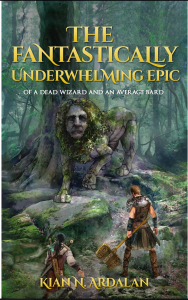
KNA: I wish I could say I cracked the secret code to good writing, but I didn’t. Just practice makes you better. Beta readers help a lot too. Whenever I received critique, I internalized it and then had it in the back of my mind while writing. I think joining a critique group and looking closely at what others do well and how you can improve is the best course of action. I still feel like I have a long way to go as a writer, and I doubt that feeling will ever go away. To be clear, that’s not necessarily a bad thing.
GdM: What are your thoughts on traditional vs indie publishing? What advice do you have for new authors looking to publish their first novel?
KNA: That’s a tough question that I can’t possibly answer with its deserved attention in a paragraph. But I’ll be succinct. There are benefits to both, and I’d advise anyone interested to do their research. One thing that I want to be absolutely clear about is that self-published books are on the rise and you can tell which ones are seriously polished. Additionally, self-published books allow for more variety in a field where trad pub are looking for the safest bet.
As for advice, I’d say that if you have to ask that question, you still need to be patient. Join a critique group, make writer-friends, and just find excuses to write a story and learn from it. Rarely is your first fully finished book the one deserving to be published.
If anyone wants my full opinion on this, they are always welcome to contact me.
GdM: Tell us about your day job as a writer for Actors Everywhere. Is it difficult to find the energy to write your own novels after spending eight hours writing at your day job?
KNA: At Actors Everywhere, I write fiction novels across genres where my boss has the final say. It really is as simple as that, and yet I feel very fortunate to be working for them. As a residency writer, I get a proper salary for the work that I do.
And it absolutely is difficult. But I believe meditation helps with that endeavor and if anything, the opportunity has led me to improve my writing as well.
GdM: Could you tell us more about your plans for the Mistland series? What’s next after Eleventh Cycle?
KNA: Ohhh. I am very excited for what is to come next. I can’t go into detail since the first book isn’t out yet, but I am happy to announce that Book 2 is called Forgotten Seed. Readers of the first book may already be able to theorize what it will be about.
But what I think is very cool is that there are ten previous cycles, including the period before the Contract of Time was forged. This allows so much room for short stories, novellas, and more.
I am very, very excited for the future of Eleventh Cycle but can’t share more without spoiling the events of the future books.
Read Eleventh Cycle by Kian N. Ardalan
The post An interview with Kian N. Ardalan appeared first on Grimdark Magazine.
December 22, 2022
REVIEW: Bone Shroud by Andrew D. Meredith
Andrew D. Meredith turns the worldbuilding knob up to eleven in Bone Shroud, the second installment in his epic fantasy series, The Kallattian Saga. Bone Shroud does everything a good sequel should do, building upon the solid foundation of the first volume, Deathless Beast, while taking the story to new heights.
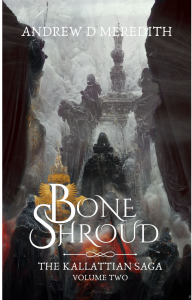 Meredith truly shines with his Brandon Sanderson-level worldbuilding, having considered every detail of the history, geography, ecology, and theology of this complex world. Most remarkable is the organic way by which Meredith introduces new elements of his world, without any awkward info dumps that have, unfortunately, become a common crutch used throughout many epic fantasies.
Meredith truly shines with his Brandon Sanderson-level worldbuilding, having considered every detail of the history, geography, ecology, and theology of this complex world. Most remarkable is the organic way by which Meredith introduces new elements of his world, without any awkward info dumps that have, unfortunately, become a common crutch used throughout many epic fantasies.
Bone Shroud also features outstanding character development work. The cast of characters all feel so relatable, facing the common challenges of personal identity and finding one’s place in the world. As Bone Shroud opens, the Black Sentinels, including brother-and-sister duo Hanen and Rallia Clouw, are trying to establish a new role in a new land. Meanwhile, Jined Brazstein is navigating through religious schism within the Paladins, struggling to remain true to his values while preserving the integrity of his order. Astrid Glass, head of the guard for the Paladames (and possessor of the undeniably coolest name in the book), is trying her best to find inner peace after a terrible tragedy.
One of the main mysteries from Deathless Beast involves a seemingly ageless seed pod that is found by Katiam Borreau, a Paladame of the Rose who serves as personal physician for their matriarch. The seed pod has been carefully guarded for centuries and is now starting to sprout in Bone Shroud.
I love a good soft magic system and thoroughly enjoyed seeing new layers of magic unfold in Bone Shroud. Somehow, I feel like this is only the beginning, and we’ll be seeing a lot more in Meredith’s subsequent volumes of The Kallattian Saga.
While personal faith featured prominently throughout Deathless Beast, the focus in Bone Shroud shifts toward conflicts within and between the organized religions in Kallattia. One of the intriguing aspects of Meredith’s world is that the gods are walking amongst the people, interacting with them and perhaps even manipulating them toward their own goals. One of the new features in Bone Shroud is the emergence of a force that could be even more powerful than the gods themselves.
Andrew D. Meredith’s ever eloquent and carefully polished prose feels as timeless as Katiam’s magical seed pod. The first half of Bone Shroud maintains the same unhurried pace of Deathless Beast. But the plot kicks into overdrive at around the halfway point, leading to a major twist at the end of the book that took me completely by surprise.
Bone Shroud is classic epic fantasy par excellence, combining meticulous worldbuilding with a compelling cast of characters and a nuanced plot. I highly recommend this series for anyone who wishes to lose themselves in an intricately crafted new world.
4.5/5
Read Bone Shroud by Andrew D. MeredithThe post REVIEW: Bone Shroud by Andrew D. Meredith appeared first on Grimdark Magazine.
December 21, 2022
REVIEW: Arch-Conspirator by Veronica Roth
Veronica Roth’s novella, Arch-Conspirator, reimagines the Athenian tragedy, “Antigone,” by Sophocles. Combining a distant future with current themes, Roth increases the pressure and keeps the fuse burning right up until the very end. Each page is riddled with anxiety-inducing stakes, complex family dynamics, and difficult choices that force our characters down dark and bleak paths.
 To preserve humanity, genes are taken from the dead and stored in a sacred place called the Archive. No one is excluded from this death ritual regardless of life choices to include Antigone’s parents, Oedipus and Jocasta. Oedipus once steered the helm of the last city on Earth, guiding its people. After his and Jocasta’s brutal murders, the mantle falls to Antigone’s militant uncle, Kreon, who graciously spares the lives of Antigone and her three siblings. What kind of life can a person have while dwelling within a gilded cage? As decrees are made and broken, both Antigone and Kreon learn there are some things greater than love and strategy, things that only know how to destroy.
To preserve humanity, genes are taken from the dead and stored in a sacred place called the Archive. No one is excluded from this death ritual regardless of life choices to include Antigone’s parents, Oedipus and Jocasta. Oedipus once steered the helm of the last city on Earth, guiding its people. After his and Jocasta’s brutal murders, the mantle falls to Antigone’s militant uncle, Kreon, who graciously spares the lives of Antigone and her three siblings. What kind of life can a person have while dwelling within a gilded cage? As decrees are made and broken, both Antigone and Kreon learn there are some things greater than love and strategy, things that only know how to destroy.
Roth’s challenge with Arch-Conspirator comes with the reimagining aspect: how to make a classic tale feel new and relevant. One of the high points of the novella is Roth’s approach. The significant events from the original remain, but Roth twists them to the benefit of a modern audience. She then layers them with impactful themes like the consequences of choice, familial love, female autonomy, and power. The story is told through multiple perspectives in first-person, allowing not only a greater attachment to what’s happening, but a fuller understanding of the differing opinions and motives of each character. The ability to bond to the characters is essential for reader investment as the story darkens and tensions heighten, especially as you near the end. I was hopeful and nervous up until the last page, even with a familiarity of the source material.
Arch-Conspirator might cause some readers difficulty with regard to length and world-building. As with so many novellas, I found myself wishing this had been a full-fledged novel. Some readers might feel the short length is a hindrance to the development of certain story elements, most pointedly, the world-building. Roth doesn’t provide explanations for why and how the Earth has become what it is, instead she focuses on the smaller and intricate aspects of society and family. Readers who prefer more deep-dives into the world-building and explanations for why things are the way they are might take issue with the lack of elaboration.
Fans of grimdark will appreciate Arch-Conspirator for its complicated narrative, the fatal consequences, and the familiar themes. Roth’s use of multiple points of view gives the reader a well-rounded insight into the reasoning behind each choice made as well as to the motive:
“And what better way to take the power from a symbol than to claim it as your own?”
The most tragic of stories are the ones that could have been prevented with a different choice or action. Roth’s gentle reminder is both brutal and all encompassing.
Thank you to Tor for sending me an ARC of Arch-Conspirator to review.
Read Arch-Conspirator by Veronica RothThe post REVIEW: Arch-Conspirator by Veronica Roth appeared first on Grimdark Magazine.
December 20, 2022
REVIEW: Dream of Death City by PJ Nwosu
Dream of Death City is the debut adult novel by author PJ Nwosu. It is an excellent read, and the first instalment in the new Red Kingdom series. Although there are no other full-size novels, Nwosu has two novellas in the same world available for free. I enjoyed Dream of Death City and its blend of dark fantasy with a decent detective fiction plot. I think this would be the perfect novel for fans of Richard Swan’s Justice of Kings because it is set in a more historical, low-magic world. Still, I think anyone who likes darker fantasy detective stories would enjoy their time spent with Dream of Death City.
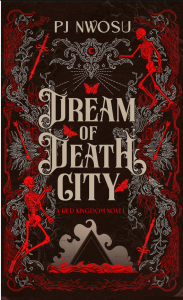 I must say, I did struggle at the start of reading Dream of Death City. I was picking up the novel at a hectic time and ended up with many unexpected demands for my attention, so I could only read it chapter by chapter a few times a week for at least the first half of the novel. I found it quite frustrating as this was the introduction to a fascinating new world, but there was a fair amount of chunky world-building and longer chapters that I just was not taking in. It does take a while to understand the different factions at play in Dream of Death City and get used to the characters’ dialect. I struggled at the start because of how sporadically I could actually sit and read. If this were not a book I was reviewing for Grimdark Magazine, I would have shelved it and picked it up later when I had the time to enjoy it properly.
I must say, I did struggle at the start of reading Dream of Death City. I was picking up the novel at a hectic time and ended up with many unexpected demands for my attention, so I could only read it chapter by chapter a few times a week for at least the first half of the novel. I found it quite frustrating as this was the introduction to a fascinating new world, but there was a fair amount of chunky world-building and longer chapters that I just was not taking in. It does take a while to understand the different factions at play in Dream of Death City and get used to the characters’ dialect. I struggled at the start because of how sporadically I could actually sit and read. If this were not a book I was reviewing for Grimdark Magazine, I would have shelved it and picked it up later when I had the time to enjoy it properly.
As it is, I am happy that I persevered. Nwosu’s world in Dream of Death City is rich, and there is so much potential to explore in religion, law, and magic that I am looking forward to reading the rest of her series. I am a reader who loves extra snippets of detail, so each chapter starting with an epigraph from the ‘Red Reform Laws’ added more information about the history of the Red Kingdom, its caste structure, and the different legal and religious powers in the world. Nwosu also has a map, glossary, and extra character art on her website, which I found interesting. Still, because they were available separately and not in the book’s main body, I could not refer back to them as much as I would like.
Dream of Death City follows two key characters from the legal branch of the Red Kingdom, Polity House. The first and main character is Thora, a Dust Caste slave who works undercover to assist in the investigations of Polity House. The second key character is Diem Lakein, a recently demoted investigator. Thora and Diem are sent to the titular Death City, an icy and superstitious settlement far from the capital and the terrifying oversight of the religious police and the lawmakers of the mainland, to look into the disappearance of the daughter of a wealthy and influential Sun Nobel. But this would not be a thrilling detective novel if it was an easily solved missing person case. There are many unpredictable layers of deception at work in Death City, and after the first few chapters settle in, Nwosu has the reader gripped. Dream of Death City is more than just a fantasy detective story. She has created a richly detailed world that shows the corruption at play in this patriarchal society, the religious zealotry of the Red Priests and their Purge House, and a fascinating magical system and world history about which I am desperate to learn more.
My favourite part of Dream of Death City, though, is not how well written it is or the engaging prose; it is the compelling characterisation of Thora and Diem and the secondary characters too. One of these, soldier Honnan Skyin, even warrants his own novella. The main two characters are firmly in the ‘have-nots’ of this world. It has scarred them in so many ways but also inspired them. I wanted to know as much as possible about them, understand their pasts, and predict their futures. There are so many details woven through about the characters, making them seem so vivid and human rather than come across as a trope or irrelevant throwaways.
This is what will make me stick with Nwosu’s series for the long haul, and I am excited to sink my teeth into the rest of them. However, as a standalone novel, it is still a highly satisfying read. The mystery element is a huge part of the Dream of Death City plot, and it is well executed and concludes satisfactorily. I am left wanting more from the characters, but I do not feel hard done to about how the investigation aspects of the story ended. This dark novel touches on some heavy themes, but it is not unnecessarily graphic. I think the GdM crowd will enjoy it, and I am very grateful to PJ Nwosu for sending over an eARC for me to be able to review it.
4/5
Read Dream of Death City by PJ NwosuThe post REVIEW: Dream of Death City by PJ Nwosu appeared first on Grimdark Magazine.
December 19, 2022
REVIEW: Hild by Nicola Griffith
Nicola Griffith’s Hild has deservedly become a classic of its genre. Published 2013, this historical novel is based on the early life of Hild of Whitby, a seventh-century saint and abbess of the monastery of Whitby, mainly known thanks to the work of the Venerable Bede in the eight century. I’d vaguely been aware of the book, but it was my love for Nicola Griffith’s Spear, a brilliant Arthurian novella published earlier this year (my book of 2022 as per this roundup, and you can read my full review of it here) that made me pull the trigger and dive in. And just in time – 2023 will see the publication of Menewood, an immediate sequel to Hild, and I for one am excited.
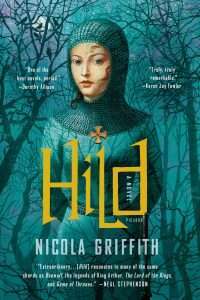 The story of Hild follows the titular character as she finds herself as a seeress to the king of Northumbria, her uncle. It is the story of a remarkable woman in a time when not much is know about many individual women. She is intelligent, calculating, ambitious and in many ways not an easy person to be around. Tall and unusual, many of those she encounters consider her to be almost supernatural, wondering whether she may be fae rather than human. And this is a story that is driven by Hild. It hangs and falls on the strength and complexity of her character – while there are many that take on important supporting roles, it is always clear that those are exactly that: supporting roles. It is Hild’s story, and even the king is ultimately a guest in it.
The story of Hild follows the titular character as she finds herself as a seeress to the king of Northumbria, her uncle. It is the story of a remarkable woman in a time when not much is know about many individual women. She is intelligent, calculating, ambitious and in many ways not an easy person to be around. Tall and unusual, many of those she encounters consider her to be almost supernatural, wondering whether she may be fae rather than human. And this is a story that is driven by Hild. It hangs and falls on the strength and complexity of her character – while there are many that take on important supporting roles, it is always clear that those are exactly that: supporting roles. It is Hild’s story, and even the king is ultimately a guest in it.
While it is clear that Griffith’s writing has evolved in the decade since the publication of Hild, it is already one of her strengths here. Evocative, atmospheric and at times poetic, it underlines the world created by her characters. It is not overly ornate, sometimes even sparse, interspersed with archaic terms to support immersion. The language doesn’t fully read as modern English, in a good way. This nicely leads me to the world-building. The care taken by Griffith in her research soon becomes obvious to the reader, and while this isn’t a history book, it is a novel rooted in detail. Tiny bits of trivia, facts and historical colour are sprinkled into the story to create a vivid picture of early medieval Britain. It isn’t a world that feels overwhelmed by its history, but one richer for it – I can see many of the strengths of Spear in Hild, with a clear line of evolution in craft. And to me, that is one of the most magical things about fiction.
As a whole, Hild is a fairly slow story, driven by characters and their actions, but one with much to appeal to a grimdark audience. The seventh century Britain it evokes isn’t far from that often seen in a traditional grimdark fantasy – and while there isn’t truly magic, there is betrayal and misfortune, complex characters and decisions and compelling political machinations. It is also a sapphic story, ahead of its time at publication – Hild reads like a book that fits in with current publishing trends and holds up amazingly well. In an age where books like The Unbroken, The Jasmine Throne and Sistersong succeed, Hild should be present on bookshelves alongside them. An underrated gem that deserves another life on bookshelves.
Read Hild by Nicola GriffithThe post REVIEW: Hild by Nicola Griffith appeared first on Grimdark Magazine.
December 18, 2022
REVIEW: Even Though I Knew the End by C.L. Polk
Demons, angels and dangerous bargains meet in C.L. Polk’s brilliant novella Even Though I Knew the End, set in a vividly drawn 1940s Chicago and featuring a sapphic romance and sinister blood magic. When Helen Brandt sold her soul in return for the life of her brother, she lost not only her place in the Brotherhood of the Compass, but her relationship with her brother too. Reduced to working as a magical private eye, when she takes a commission to photograph a particularly violent crime scene she’s determined not to get drawn into the mystery…but when she’s offered the reward of her own soul returned to her, she can’t help but take the job. It would mean her life is her own again, to spend in peace with her girlfriend Edith, but in order to claim her prize she has to track down the murderous White City Vampire and survive to tell the tale.
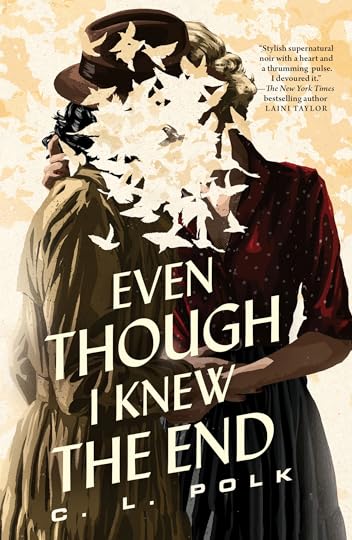 Despite its short length as a novella this is packed full of vibrant worldbuilding, compelling characters and mysterious, intriguing magic, and it covers a lot of ground both narratively and thematically. Secret societies, dark magical rituals, a hardboiled 40s-era tone and feel (think sharp suits, Chestertons, sapphic speakeasies and a cynical, dryly witty first person narration) and a smattering of angelic lore all rub shoulders with a painful family history, a warm and touching romance, and a backdrop of everyday sexism and a deeply-rooted gender power imbalance. There isn’t necessarily time to delve into every theme and idea as deeply as, say, a novel-length story might have allowed, but there’s more than enough depth here in both the characters and the plot to keep the pace moving and offer plenty of food for thought.
Despite its short length as a novella this is packed full of vibrant worldbuilding, compelling characters and mysterious, intriguing magic, and it covers a lot of ground both narratively and thematically. Secret societies, dark magical rituals, a hardboiled 40s-era tone and feel (think sharp suits, Chestertons, sapphic speakeasies and a cynical, dryly witty first person narration) and a smattering of angelic lore all rub shoulders with a painful family history, a warm and touching romance, and a backdrop of everyday sexism and a deeply-rooted gender power imbalance. There isn’t necessarily time to delve into every theme and idea as deeply as, say, a novel-length story might have allowed, but there’s more than enough depth here in both the characters and the plot to keep the pace moving and offer plenty of food for thought.
Is it grimdark? Well it’s maybe not the darkest of the dark, and its blend of historical noir and angelic magic is quite far removed from the usual secondary world fantasy stylings. That being said, it’s very much a story about doing whatever it takes for love – both familial and romantic – regardless of the cost, and its real-world themes of oppression, power imbalance and violence towards women should feel entirely relevant to fans of the genre. Irrespective of labels though, it’s just a fascinating and brilliantly-told story with deeply personal stakes, a tangible sense of danger, and a clever narrative backbone in the way Helen’s pact with the devil shadows everything, lending a tangible sense of urgency and a crucial theme of choice. Short and pacy it may be, but it’s also richly detailed and brilliantly characterful – well worth checking out.
Read Even Though I Knew the End by C.L. PolkThe post REVIEW: Even Though I Knew the End by C.L. Polk appeared first on Grimdark Magazine.
December 17, 2022
Royalty and Power in Fantasy: Heavy is the head that wears the crown
Pick up a fantasy book at random and odds are, there will be royalty in the story. A sneering prince looking down on the commoners, a king or queen struggling with the burden of their responsibilities, a princess doing her best to play the role expected of her whilst plotting in the shadows the ways of earning true power. What is the obsession with royalty in fantasy? Why do writers feel the urge to use these characters in their stories?
The birth of fantasy is a topic debated frequently by its readers. Whilst there are arguments for different starting points for the much-loved genre, it is clear that it has strong links to the fairytales that many of us grew up with; fairytales that stem from medieval times with dark castles, kings, queens, princes, and princesses. Fantasy’s obsession with royalty goes hand in hand with its love of the Middle Ages. After the fall of the Roman Empire, Western Europe fell into a decline known as the Dark Ages. It was a time of chaos: war and bloodshed, plague and depression. It was grim as hell. The perfect period for writers to mine for ideas in the hope of creating conflict and drama. Throughout it all, monarchies rose and fell. Beheadings, hangings, treaties, alliances… the Dark Ages had it all. Whilst the Islamic world was going through a Golden Age, Western Europe’s Dark Ages inspired some of the greatest writers in western literature, and the lives of the kings and queens of this period were full of intrigue and scandal.
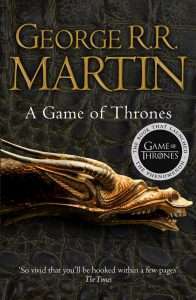 George R.R. Martin’s A Song of Ice and Fire is famously influenced by the War of the Roses – civil wars fought in England between the houses of Lancaster and York. He had read history books about the important events but wanted his story to focus on the juicy parts: the war, betrayal, assassinations, and murder. His fascination with the history of the kings and queens of that period even led to him compiling his own history book of the Targaryens aptly titled Fire and Blood which is soon to be a series on HBO.
George R.R. Martin’s A Song of Ice and Fire is famously influenced by the War of the Roses – civil wars fought in England between the houses of Lancaster and York. He had read history books about the important events but wanted his story to focus on the juicy parts: the war, betrayal, assassinations, and murder. His fascination with the history of the kings and queens of that period even led to him compiling his own history book of the Targaryens aptly titled Fire and Blood which is soon to be a series on HBO.
One of Martin’s inspirations, JRR Tolkien, looked to the mythos of Britain and was inspired by elements of King Arthur and his infamous legend (though he found it all too connected to Christianity for his liking and ended up developing his own story with its own cultures, languages, and mythos – he was quite successful with it too…) and William Shakespeare lived through the transition of Elizabeth I’s death and her enemy’s son, James I, taking the throne. Shakespeare was able to see the workings of the royal family and felt the pressure of leading an organization called the King’s Men, working to produce incredible plays that needed to be performed nightly. His work during this time is interesting in that through plays like King Lear, he looks at the effect of a divided Britain. His work becomes a warning without being hollow propaganda. A clever move, as King James was king of both Scotland and England at the time. Whether writing about the monarchy, or for the monarchy, it is clear to see that some of the greatest writers have been inspired by those in power.
That’s the key component: power. The stories we read often involve characters with power, and characters without power. This divide can be what drives the story – the goal can be for a character without power to obtain it. Stories with royalty allow for that epic scope. They lead whole nations, call for armies to head into battle, and require men and women to die for their country. Adding royalty often creates plots that lead to world-changing events.
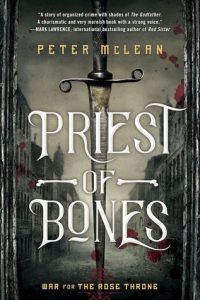 Peter McLean’s War for the Rose Throne gives a thrilling example of what happens to a person when they gain power. Starting with Priest of Bones, the character Thomas Piety returns from war to rebuild his criminal empire. There are different levels of power that Piety either achieves or witnesses throughout the story and it is the power of McLean’s writing from Piety’s perspective that gives the reader an insight into his incredible worldbuilding. When the story moves to the capital, Piety witnesses power on another level. People in the capital feign reverence to the Queen knowing that it is important to at least be seen to be fawning over the monarch. Those who do not are often taken away and never seen again or used as an example to ensure the masses obey.
Peter McLean’s War for the Rose Throne gives a thrilling example of what happens to a person when they gain power. Starting with Priest of Bones, the character Thomas Piety returns from war to rebuild his criminal empire. There are different levels of power that Piety either achieves or witnesses throughout the story and it is the power of McLean’s writing from Piety’s perspective that gives the reader an insight into his incredible worldbuilding. When the story moves to the capital, Piety witnesses power on another level. People in the capital feign reverence to the Queen knowing that it is important to at least be seen to be fawning over the monarch. Those who do not are often taken away and never seen again or used as an example to ensure the masses obey.
This social construct of subjects having to be seen obeying a monarch draws parallels to Shakespeare’s time and the anxiety people felt when they were uncertain about the balance of power. The powerful using fear to ensure obedience isn’t something confined to the annals of history. It can still be seen today and great writers use such injustices to add depth to their stories and enrich the experience for the readers. Piety is a brilliant character for a reader to follow in this regard. He has lived as a common man. His father’s actions towards him and his brother show the abuse of power within a family. The abuse of power and lack of empathy for their fellow man is shown on a grander scale through the actions of the leaders in Piety’s world. Of course, Piety himself questions his actions when he realizes that he has brought about so much death in his homeland.
Fantasy has its heroic royals. Shining beacons that show us the way things should be done by those with enough power to influence the masses. Lord of the Ring’s Aragorn is a reluctant leader who cares for those around him and would willingly die for them. Princess Leia in Star Wars is a badass leader, unwilling to just wait for others to rescue her and Queen Olenna Tyrell in Game of Thrones is all kinds of awesome. However, some of the best royals in fantasy, and in grimdark especially, are those leaders who struggle in their role. In King Henry IV Part Two, Shakespeare writes, “Uneasy is the head that wears the crown.” It is easy to be envious of kings and queens. Power. Wealth. Powerful alliances. The world seems easy. But fantasy sometimes scratches the surface and shows us what is beneath.
The First Law trilogy by Joe Abercrombie introduces Jezal dan Luther, an arrogant, handsome, smarmy noble who doesn’t realise the privilege he has when he mocks those beneath him. When he is suddenly thrust into the office of king, he feels it is his right to rule. Little does he know that his new role is suffocating with everyone watching his every move, no chance to choose who to speak to, where to go, who to love. Jezal comes to realise that life as a king means sacrifice and that the higher you climb, the more people you serve. By the time readers come to see Jezal years later in the Age of Madness trilogy, he is no longer the charismatic and smart-talking young man we were introduced to. There is a weariness to him, as though the crown is a literal burden weighing him down until he is almost unrecognizable. The burden of power has robbed him of his vibrancy and it is something that Abercrombie delves into even further with his son, Orso. Abercrombie also plays with an idea touched on by McLean, that true power can be wielded from the shadows through fear and manipulation. The scheming Bayaz understands that royals can be killed either by assassins or through revolution. Figureheads are sometimes just the puppets being played by a greater master.
Great stories take characters on a journey. They change. They evolve. Characters rise and fall and it is easy to see that when reading about royalty. Whether it is characters overcoming obstacles to rise to the position of king or queen, or royalty falling and learning to live away from the trappings of their former position, it is always interesting to follow them on that journey and see how the characters behave when their lives change so much. It is the study of power and the lack of it. Human history is one of conflict and the struggle for power. Fantasy shines a light on such dynamics. It gives an insight into the corruptive nature of power and the strength needed to shield oneself from it. Tolkien displayed this to perfection in Lord of the Rings and it will be a focus on Amazon Prime’s upcoming The Rings of Power. As a famous character once said, “With great power comes great responsibility.” It is that incredible responsibility that makes regal characters in fantasy so captivating and powerful to readers and writers.
Want to see some royalty topple? Grab yourself a copy of The King Must FallThe post Royalty and Power in Fantasy: Heavy is the head that wears the crown appeared first on Grimdark Magazine.
Review: Deep Roots by Ruthanna Emery
Deep Roots is the sequel to Ruthanna Emrys’ Winter Tide and The Litany of Earth. It is a story set in a “perspective flip” Cthulhu Mythos. The basic idea behind the Innsmouth Legacy is the Cthulhu Mythos is not actively hostile but simply different. The Deep Ones are just another race of human beings, the Mi-Go are busy-bodies who want to make humans better, the Yithians (actually the Yithians are much worse). It moves the setting from the realm of horror into that of science fiction.
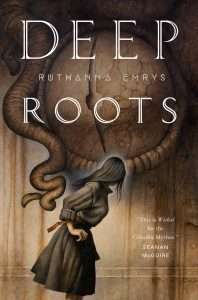 I don’t mind authors doing this sort of thing and actually think more people should. Basically, there’s no point to trying to ape H.P. Lovecraft’s prose but much benefit to adding your own spin on his universe. It’s why I enjoy the works of Brian Lumley’s Titus Crow, Peter Cline’s 14 and The Fold, Matthew Davenport’s Andrew Doran series, and David Hambling’s Harry Stubbs series.
I don’t mind authors doing this sort of thing and actually think more people should. Basically, there’s no point to trying to ape H.P. Lovecraft’s prose but much benefit to adding your own spin on his universe. It’s why I enjoy the works of Brian Lumley’s Titus Crow, Peter Cline’s 14 and The Fold, Matthew Davenport’s Andrew Doran series, and David Hambling’s Harry Stubbs series.
The premise of the Innsmouth Legacy is the adventures of Aphra Marsha. Aphra is one of the only two survivors of the camps where the population was herded after the events of The Shadow Over Innsmouth. This idea was actually done before with The Doom that Came to Innsmouth by McNaughton but his story took a traditional view that the Deep Ones, victim of a horrible crime or not, were still an evil cult. This group of Deep Ones is entirely innocent of the blood libel they have been accused of.
The first book had Aphra exploring Miskatonic University and the Innsmouth ruins while dueling with both the Yith and FBI. The sequel takes Aphra and her brother Caleb on a quest to New York (as well as Red Hook) in order to find missing members of the Innsmouth Legacy (a.k.a “mistborn”). Along the way, they encounter the Mi-Go who provide Aphra with a different perspective on the religion she’s grown up revering.
I really enjoyed this novel and hope Ruthanna Emrys continues to write books in the setting. While it’s a bit iffy to find so many of the Mythos creatures made harmless and good intentioned, she still manages to make some of them quite terrifying. The Yith (also the Elder Race in this version) are also a people she reveres but this book highlights what a vicious and evil race their actions actually make them to being. The K’nyanians (from “The Mound”) are also revealed to be even worse than Lovecraft portrayed them.
I also like how Ruthanna Emrys plays with the themes of prejudice as Aphra Marsh proves to be outstandingly bigoted and close minded against the Mi-Go. The prospect of defying fate, of exploring the galaxy, and many things we tend to think of as positive are all things that horrify her. She can’t get into the mindset of someone who doesn’t view the Earth’s oceans as the “be end all” of existence.
I also like the follow up from events in Winter Tide with the apexia of Mary, Professor Turnbull struggling to get her life back in order, and Audrey’s love of Aphra that she remains oblivious too. It seems very likely Aphra is asexual with no interest in mating beyond
reproduction (even then that’s because she’s being pressured into carrying on the Innsmouth legacy) and that’s something you don’t see very often in books. I also like how FBI Agent Ron Spector is caught between his desire to protect the United States from supernatural threats and his friendship with Aphra (who is actively hostile to the United States for obvious reasons).
In conclusion, I really like this story and think fans of Lovecraft will enjoy it if they don’t mind switching genres. It’s not horror and it’s not a particularly “alien” version of the Mythos but it’s still a very good take on Lovecraft’s work which I enjoyed for its own sake.
Read Deep Roots by Ruthanna EmrysThe post Review: Deep Roots by Ruthanna Emery appeared first on Grimdark Magazine.

